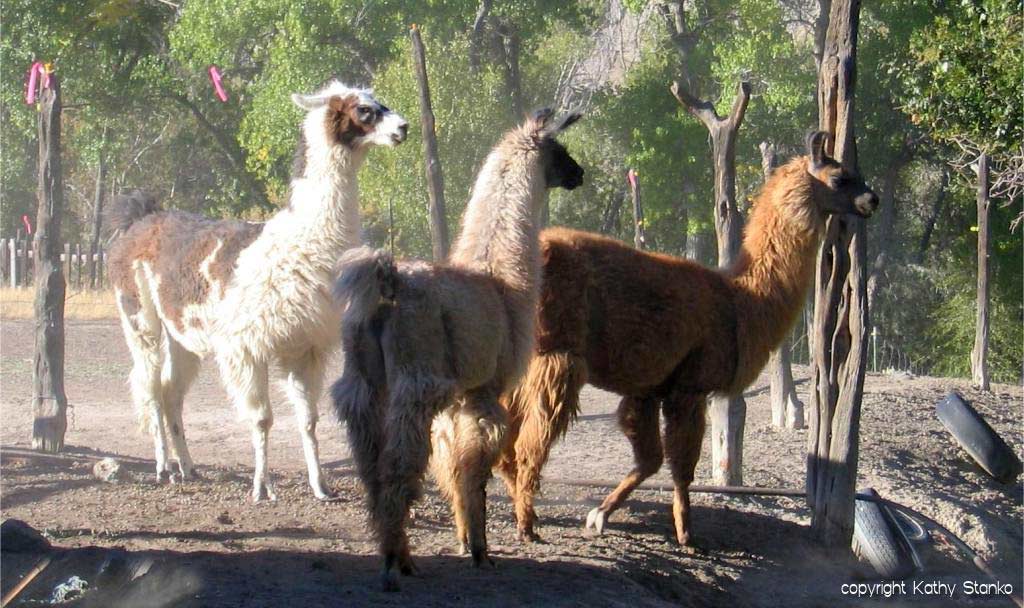Anthrax in Llamas and Alpacas

This news release is dated July 2005. However, the news release contains valuable information on identifying anthrax and what precautions to take. Contact your veterinarian or state animal health department for current information. RMLA webmaster.
NEWS RELEASE
Texas Animal Health Commission
Box l2966 • Austin, Texas 78711 • (800) 550-8242
For Immediate Release--
Anthrax Confirmed in Sutton County, Texas
Two ranches in Sutton County, Texas have laboratory-confirmed cases of anthrax in horses, deer and cattle, and laboratory results are pending for several other sites in the county, where livestock and deer losses have been reported. Although this bacterial disease occurs almost yearly in this region of the state, cases have not been confirmed within Sutton County for more than 20 years. Typically, outbreaks are in Val Verde, Edwards, Kinney and Uvalde counties, but on rare occasions, cases have been confirmed as far south as Starr County, reports Dr. Thurman Fancher, director of Area 6 (West Texas) for the Texas Animal Health Commission (TAHC).
“Anthrax is under-reported, because many ranchers in this area automatically dispose of carcasses and vaccinate livestock when they find dead animals that are bloated or bloody--common signs of the disease,” said Dr. Fancher. “Anthrax is a reportable disease, however, and it’s important to know when an outbreak occurs, so other ranchers can be notified to vaccinate.
Dr. Fancher explained that it is common to see death losses in one pasture, but not across the fence. However, all livestock in an infected area should be vaccinated to prevent potential losses. There is no effective, approved manner to deliver anthrax vaccine to grazing wildlife that cannot be captured and confined.
Dr. Fancher said that, during the anthrax outbreak, deer owners enrolled in the chronic wasting disease (CWD) surveillance program are to report death losses, but they should check with their private veterinary practitioner before collecting brain tissue from the animal for CWD testing. “If a dead deer has clinical signs of anthrax, we may need to avoid opening the carcass,” he said. CWD has not been detected in Texas.
“Anthrax is an ancient disease that occurs worldwide. The first reports in livestock date back to 1500 BC,” noted Dr. Fancher. “When an infected animal dies, the ground becomes contaminated with the spores of Bacillus anthracis bacteria, unless the carcass and soil are purified with a very hot fire. Even though spores do not multiply or spread underground, they can lie dormant in soil for decades, awaiting the perfect combination of weather and soil conditions to become vegetative. Animals then are exposed to the disease when they eat grass contaminated with the bacteria.”
TAHC regulations require that the affected animal’s bedding, its carcass, and nearby manure be burned with wood, diesel or gasoline (tires and oil create too much pollution), to cleanse the ground. Do not open carcasses. If there is a burn ban in the area, contact the TAHC Area 6 office in Lampasas at 1-800-658-6642 for disposal information.
Livestock on the premises must then be vaccinated and held under quarantine for a short time, to ensure any anthrax-exposed animals are not moved from the premises. Laboratory tests, conducted by the Texas Veterinary Medical Diagnostic Laboratory in College Station, are needed to confirm infection, and suspected cases should be reported to private veterinary practitioners or the TAHC’s headquarters in Austin at 1-800-550-8242.”
Anyone handling or burning carcasses, or vaccinating livestock against anthrax should wear long sleeves and gloves. Exposure can cause a nasty, black sore that requires medical attention and antibiotics. General sanitation procedures should be followed after handling livestock, and equipment used on the animals should be disinfected. Pets should be kept from dead carcasses or bones of dead animals, which may pose a disease risk. Healthy animals should be moved from anthrax-contaminated areas.
“Visitors to the area should not be alarmed by anthrax,” said Dr. Fancher. “Just leave dead animals alone, and don’t pick up shed antlers or old animal bones. By the time the area’s hunting season begins, the cooler weather brings an outbreak to a close. If, after an outing, you develop an unusual sore, see your physician for treatment.”
Actions that should be taken during an anthrax outbreak:
- Properly dispose of animal carcasses by burning to prevent exposure to other animals, such as predators or dogs. Remove healthy livestock from the area.
- Vaccinate livestock if cases occur in the surrounding areas. Because the anthrax vaccine is a “live” vaccine, it should not be administered concurrently with antibiotics. Vaccinated animals are to be withheld from slaughter for two months.
- Restrict movement of livestock from an affected premise until animals can develop immunity through vaccination.
Like this article? Become a RMLA Member today!

